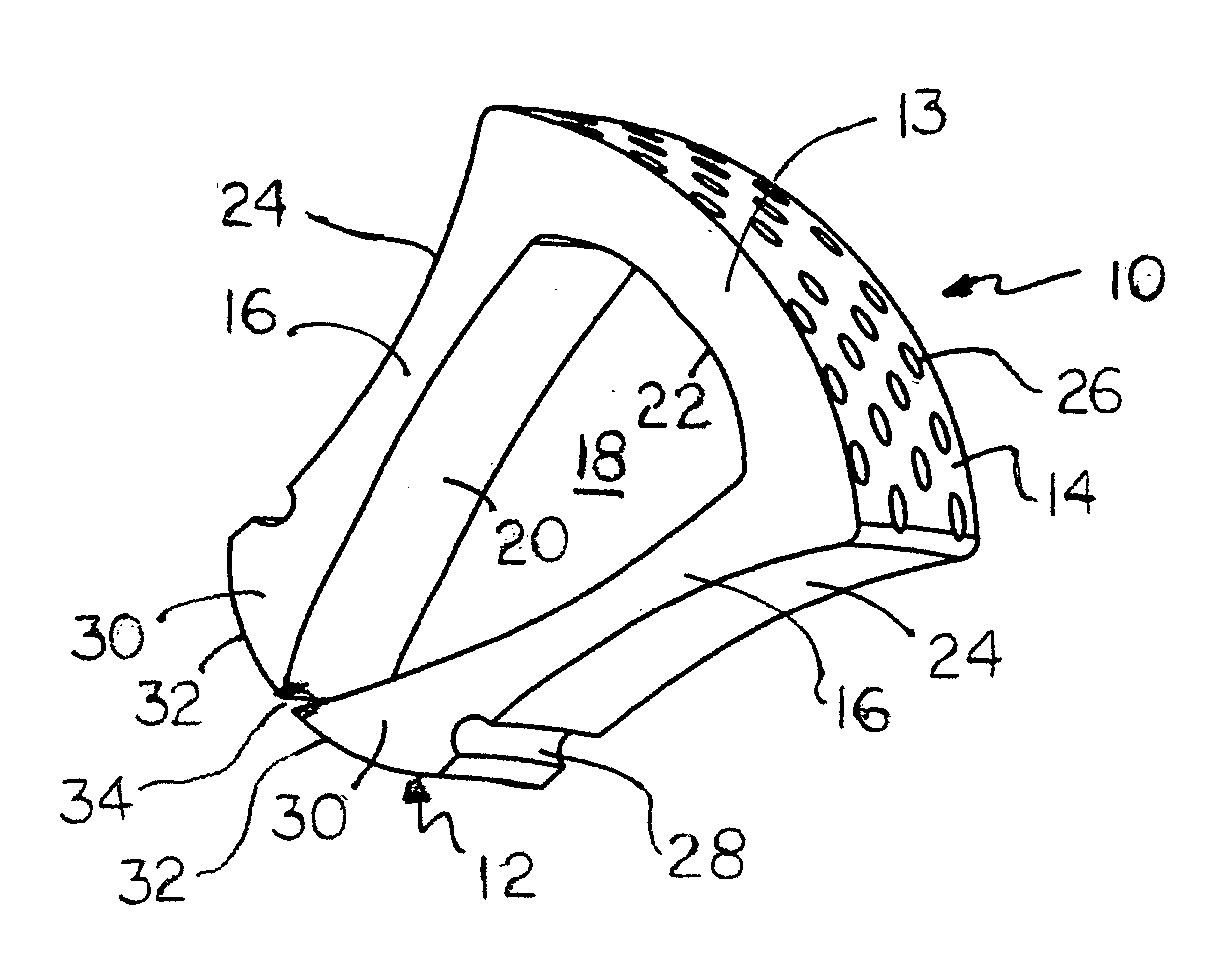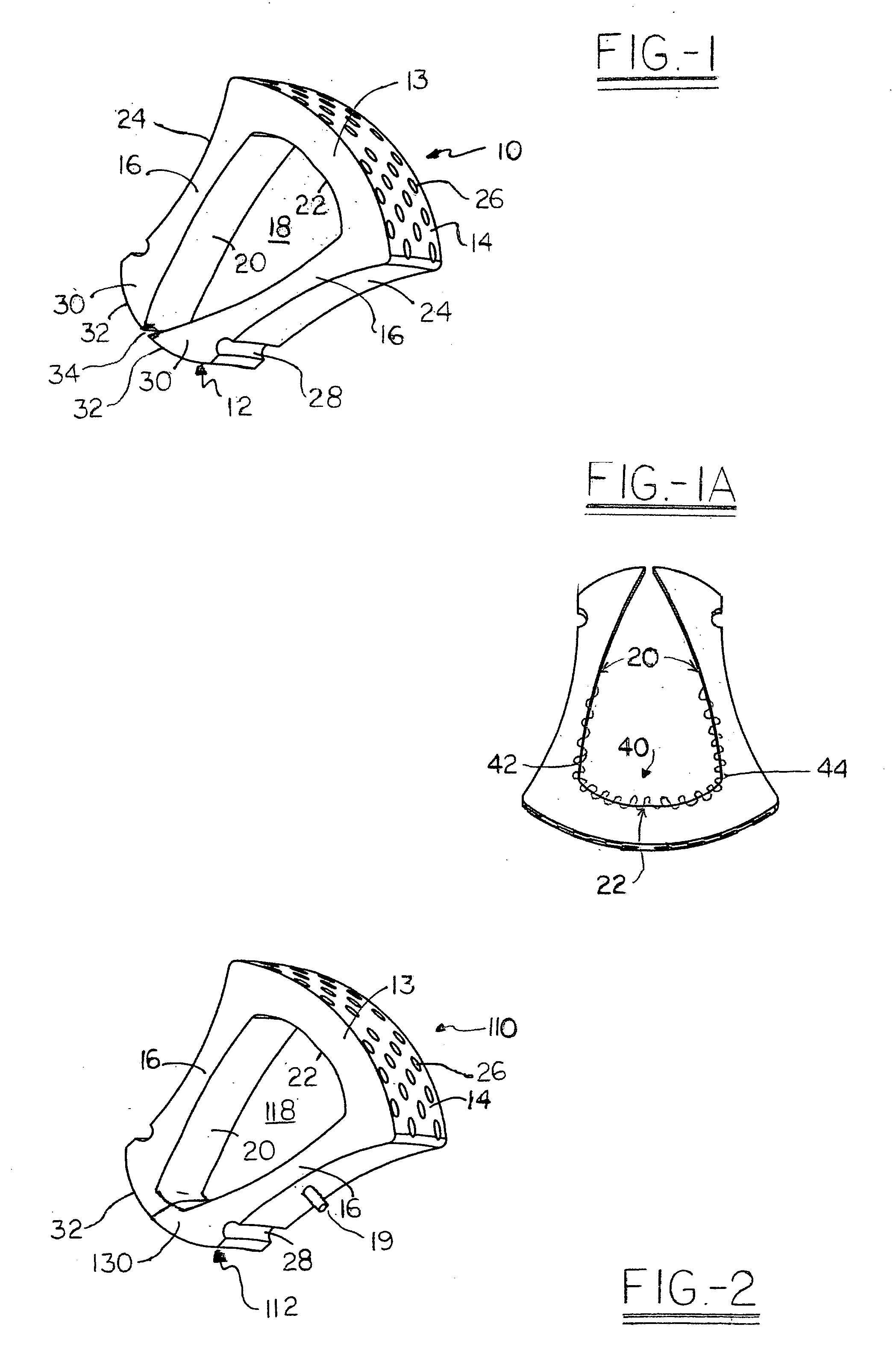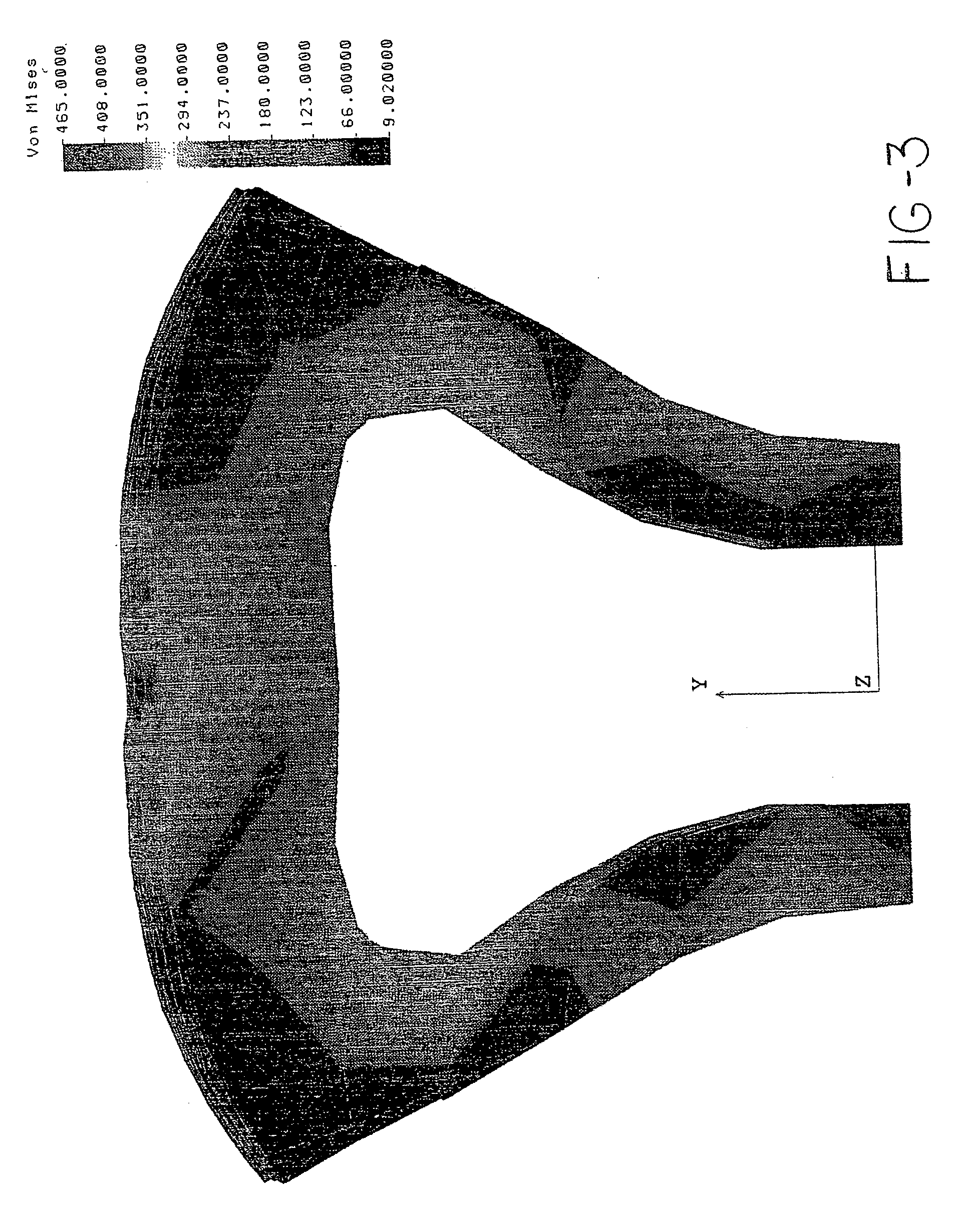Anisotropic homogeneous elastomeric closed torus tire design & method of manufacture
a technology of elastomeric closed torus and elastomer, which is applied in the direction of transportation and packaging, mechanical equipment, and other domestic objects, can solve the problems of tire failure, complex tire construction, and difficult control of rubber compounds and ultimate solid state layers, so as to facilitate proper tire performance, reduce normal rolling resistance of tires, and effective mounting
- Summary
- Abstract
- Description
- Claims
- Application Information
AI Technical Summary
Benefits of technology
Problems solved by technology
Method used
Image
Examples
Embodiment Construction
[0019] A first embodiment tire 10 of the present invention is shown with a section thereof in perspective view in FIG. 1. As will be readily understood, the tire 10 is an integral toroidal body with significant symmetries, so there is no need to illustrate the remainder of the tire when shown in diametrical section. The tire 10 has several characteristic features which are readily observed in FIG. 1. Particularly, the tire 10 is formed as a wedge-shaped body in cross-section, with a width that increases as the radial distance from the center of the torus increases. This means that a set of rim-engaging surfaces 12 are narrower in width than the width of a cross or tread member 13 on which is one or more road engaging surfaces 14. It should be understood that reference to a road engaging surface 14 may also relate to engaging surfaces other than roads, for vehicles which are not used on road surfaces. Between the rim-engaging surfaces 12 and the road-engaging surfaces 14 are a pair o...
PUM
| Property | Measurement | Unit |
|---|---|---|
| inflation pressures | aaaaa | aaaaa |
| structurally stable | aaaaa | aaaaa |
| thickness | aaaaa | aaaaa |
Abstract
Description
Claims
Application Information
 Login to View More
Login to View More - R&D
- Intellectual Property
- Life Sciences
- Materials
- Tech Scout
- Unparalleled Data Quality
- Higher Quality Content
- 60% Fewer Hallucinations
Browse by: Latest US Patents, China's latest patents, Technical Efficacy Thesaurus, Application Domain, Technology Topic, Popular Technical Reports.
© 2025 PatSnap. All rights reserved.Legal|Privacy policy|Modern Slavery Act Transparency Statement|Sitemap|About US| Contact US: help@patsnap.com



